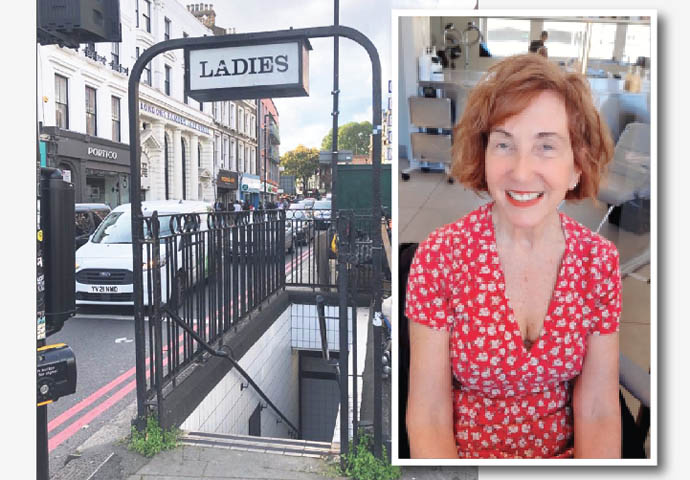Unite in the defence of women’s spaces
Currently the debate about public loos is being side-tracked so that it divides us, says Emma Goldman
Thursday, 27th October 2022 — By Emma Goldman

THE other night, I went to meet a friend in Soho. After a few drinks, I made my way to the Ladies down steep, narrow stairs.
As I descended, the air got muskier, the light dimmer, the conversation from above more muffled. Long gone was the wide bar, gone the wall-papered surrounds cluttered with photographs of patrons past and present, gone the clink of glasses and Thursday night humour.
As quickly as I entered the loos, I came to a halt. The place was filled with men. Milling around under the strip lights, they seemed illusionary and huge. For a moment, creatures from another planet.
I came to. Was I in the wrong place? But there were no urinals, only doors. As I swung round to the notice, I realised my mistake. A tall, muscular-looking man with stubble made his way to the basin.
“Oh! Gender neutral loos,” I observed out loud.
“Yep,” he winked. “Want to join me in a cubicle?’
“Not on your nelly,” I said briskly, and he laughed. He washed his hands, dried them, and winked back at me again.
I said nothing.
Just for a moment, between us in the air hovered the tired old male rejoinder that it was “only a joke”, about to turn me into the usual uptight woman who couldn’t take one.
But on this occasion, he left, whistling his way out to the light bulb, the narrow staircase, and up to the warmth of the bar.
There is currently a debate about loos, mostly on social media sites, but occasionally spilling out into the mainstream, and whether or not they should be gender neutral. It is ongoing and bitter. As is the debate about whether trans women should be allowed in the Ladies.
The debate is really about women’s spaces; specifically, the fear of them being taken away. Much of it has been led and prompted by the author JK Rowling. In her defence of women’s spaces, she focuses on what she perceives as the threat coming from trans women.
Her starting point is that trans women are not women but men. Men dressed up as women, predatory men in costume. Their disguise is a charade.
According to JK Rowling, the years of therapy required before medical operations, their vast financial expense, the social ostracisation, the woeful lack of role models in mainstream media, the threats and acts of violence, the fact that the average lifespan of a trans woman is just 35, count for nothing when set against the holy grail: access to Ladies’ loos. Or women’s changing rooms. Or anywhere with half-clad women.
Yet I have never been hassled by a trans woman. Neither has anyone I know.
And the point about Ladies’ loos or changing rooms is that not only are they gender affirming but also potentially safer spaces.
And Ladies’ loos have a further aspect to them, too. If they have the space and surround, they are places where confidences are exchanged, hearts poured out, and comfort given.
Encouraged by JK Rowling, however, we have a sad situation where two groups of women, trans and cisgender (those whose gender aligns with their biological sex), are pitted against each other.
As a result, they are divided and ruled in the historic way of any nervous hegemony.
The man in the Soho loos was not a danger to me. But he could have been to a more vulnerable woman or trans woman.
A more positive stand than the one put forward by JK Rowling would be for cisgender and transgender women to come together as a collective in the defence of women’s spaces.
• Emma Goldman is an author and English teacher.